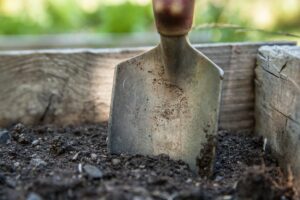More and more California MMJ card carriers are cultivating their own plants at home, and it’s easy to see why. Though most cannabis card holders are likely to get their main supply from their local dispensary, it’s a useful – and fun – way to make sure you’re never caught without the wonder plant.
Before you consider home cultivation, it’s prudent that you get an MMJ card. This card will allow you to legally access medical marijuana – and it’s seeds – to treat your ailment with. The process of getting your MMJ card is quick and easy and can be done online from the comfort of your own home. While some people may question this ease of access, it can make a life changing difference to someone who has an ailment that leaves them housebound.
Getting Your MMJ Card
When applying for your California medical marijuana license you’ll first be asked to fill out a short, simple questionnaire on your ailment and how it affects your life. When you complete this questionnaire you’ll start your ‘virtual doctor’s visit’ via our HIPAA telemedicine platform. This ‘visit’ is an online consultation with a state licensed physician. Your appointed doctor will give you a full medical evaluation, where you’ll be asked a few non-invasive questions about your medical history and your ailments. This consultation should take you no longer than 20 minutes.
If the doctor thinks your suitable for a medical marijuana card, they’ll tell you there and then and you’ll be emailed your MMJ card recommendation straight away. When you receive this, it can be printed off immediately and brought to an MMJ dispensary for use. Your physical embossed copy of the recommendation will arrive in a few short days.
Know the Medical Marijuana Laws

If you’re going to grow MMJ in California, make sure you know the rules and limitations of Proposition 64.
It’s important that if you intend to grow medical marijuana, that you’re au fait with the laws surrounding cannabis cultivation with an MMJ card. Proposition 64, which came into effect on January 1 of this year, made home cultivation legal – within certain limits. Under this law, California medical marijuana card carriers may possess up to one ounce of the plant and can grow six mature, or twelve immature plants of their own at home. These laws apply to everyone aged 21 and over.
As home grow laws are still in their infancy, they’re not too fraught with taxes and restrictions yet, but as the medical marijuana program evolves, this may change. Make sure to check with your local authority before you get your hands dirty to ensure you’re growing within the limits of the law.
Roadblocks to Growing MMJ
Unfortunately, even with the promotion of home cultivation as a supply solution for MMJ card carriers across California, there are still some roadblocks to accessing equipment or information. As marijuana possession is illegal at a federal level, online retailers are reluctant to sell MMJ growing equipment for fear of legal repercussions.
Similarly, garden centers and nurseries have in some cases been withholding on information on how best to grow the plant, regardless of whether the customer has a medical marijuana card or not. As attitudes and laws surrounding MMJ further relax, this problem should become near obsolete.
Best Practices for Growing Medical Marijuana in California

If you’re going to grow MMJ to help with your ailment or condition, know the best practices so you can get the best results.
Like with any other plant, it’s important to know the growing habits of MMJ before you plant your first seeds. Unusually, medical marijuana can exhibit periods of bloom in total darkness, but it’s best to give it plenty of light, water and fertilizer.
Medical marijuana responds very well to fertilizer, especially during the vegetative period of growth. During this period, use a fertilizer that is high in nitrogen to stimulate rapid growth. When the plant flowers, use a fertilizer that’s high in phosphate and potassium to encourage the growth of large, lush buds. Unlike other plants, MMJ’s response to fertilizer is so strong that the more you give it, the bigger and lusher it will grow.
Following the flowering stage of the medical marijuana life cycle, it will sadly die, and the whole growing process should begin again.
Depending on where you live in California, there are different rules and regulations about where you can grow MMJ. These rules are decided by your local authority, so it’s important to get in touch with them before you plant your seeds.
Though outdoor cultivation is easier and less expensive, a lot of local authorities limit growing to indoors. Unfortunately there has been no confirmation as to why that is, but it’s assumed that it’s because some neighbors don’t like the sight – or smell – of the plant.
If your local authority allows it, grow your medical marijuana outside. If your plants are exposed to the sun all day long, and the dark all night long, they should experience rapid growth and start to bloom big, beautiful flowers in no time. To get the same effect through indoor growing, you’ll have to invest in a indoor grow light.
Take your time to choose what MMJ strain you want to grow. It’s best to cultivate a strain that will effectively treat the ailment outlined on your cannabis card. If you’re not sure of what strain will work best to treat your illness, check out our guide here.
Although home growing is now legal in California for medical marijuana card carriers, it’s still inexplicably illegal at a federal level in the United States. Thankfully, the federal government adopts a laissez faire attitude on this topic, so it’s extremely unlikely that you’ll get in trouble with the feds for doing a little home cultivation.
If you feel like your green fingers are up for a gardening challenge, apply for your California MMJ card today and get digging!
